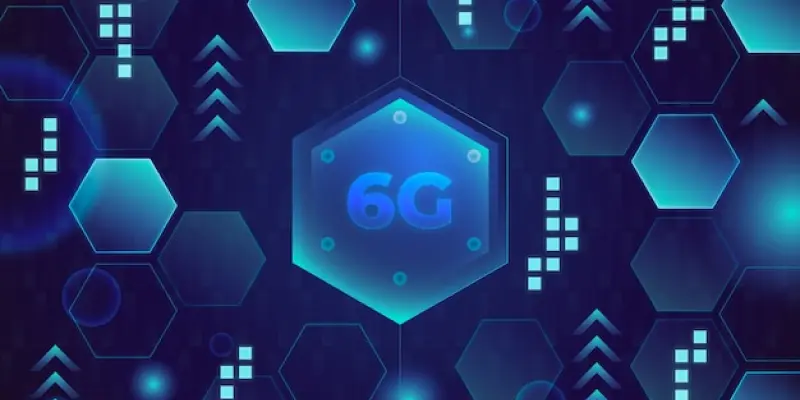As our world becomes increasingly interconnected, the telecommunications industry is on the brink of yet another evolutionary leap: sixth-generation (6G) wireless technology. While 5G is still undergoing global implementation, a new frontier of faster, more reliable, and intelligent wireless communication is already being explored by researchers, governments, and private enterprises. The advent of 6G technology promises speeds at the terabit level, ultra-low latency, energy-efficient networks, and the seamless integration of advanced artificial intelligence (AI) capabilities. These advancements are anticipated to support transformative applications such as holographic communication, autonomous systems, and a fully immersive Internet of Things (IoT). The development of 6G does not merely signify a technological upgrade; it represents a paradigm shift that will redefine human interaction with the world and each other.
Projected Capabilities and Rollout
Projected for rollout in the 2030s, 6G networks will far exceed the capabilities of their 5G predecessors. This leap in technology is poised to bring astonishing changes to our digital landscape, focusing on extreme data rates, seamless connectivity, and networks capable of self-optimization through AI and machine learning. 6G will emphasize creating a hyper-connected world, pushing the boundaries of what is possible in wireless communication. The innovations anticipated with 6G will redefine the parameters of communication technology, fostering a future where instantaneous and seamless connectivity becomes the norm.
Key Features of 6G
Terabit speeds, which are projected to be up to 100 times faster than 5G, will revolutionize how we transfer and communicate data instantaneously. The promised sub-millisecond latency will be critical for real-time operations such as autonomous vehicles, remote surgery, and sophisticated smart city infrastructures. AI-driven optimization stands out as another core feature where networks will possess the capability to learn, adapt, and self-heal. Energy-efficient designs will not only make these networks more powerful but also ensure they contribute positively to efforts aimed at reducing our carbon footprint.
Challenges in 6G Development
One of the major hurdles is the efficient utilization and management of spectrum to support the terabit speeds and broader capacity of 6G networks. Additionally, balancing high performance with low energy consumption will be crucial, as sustaining advanced functionality without increasing energy usage dramatically is essential for the success of 6G technology. With technological complexity increasing, the energy demands might rise unless intentionally counterbalanced by designs focused on sustainability.
Network Infrastructure and Cybersecurity
Another prominent challenge lies in the necessity for significant upgrades to the existing infrastructure to support 6G capabilities. As networks become more advanced and intricate, integrating robust security measures becomes critical to safeguarding them from potential vulnerabilities and cyber threats. Ensuring that the networks are secure by design, with built-in safeguards against intrusions and malicious attacks, will be vital to maintaining the integrity and trustworthiness of 6G technology.
Integration of AI
The integration of AI into network architecture carries with it demands for both technical ingenuity and robust ethical frameworks. Ensuring that these networks operate within ethically acceptable boundaries and maintain the privacy of user data necessitates rigorous oversight and guidance.
Insights from Industry Leaders
Jeffrey Andrews stresses the transformative potential of AI integration in 6G networks, indicating that “The combination of advancements in wireless communications and machine learning will make 6G networks inherently intelligent, providing unprecedented services.” However, he also underscores the complexities involved, highlighting the need for security and ethical considerations during development. Andrews believes that the race to 6G is as much about inclusivity as it is about innovation, emphasizing the importance of diverse perspectives in building networks that truly serve everyone.
Professor Hans Schotten envisions 6G addressing existing network issues by offering higher speeds and comprehensive solutions for network gaps. Schotten emphasizes the necessity of global collaboration, stating that standardization is essential for successful implementation.
Aditi Roy highlights the monumental leap 6G represents, not just in terms of speed but also in evolving connectivity approaches. She asserts that the integration of AI will facilitate networks that are predictive and capable of self-optimization in real-time. Roy speaks to practical challenges including spectrum allocation and energy efficiency, emphasizing that deploying 6G infrastructure will require close coordination among engineers, policymakers, and researchers.
Transformative Applications of 6G
In healthcare, 6G could enable real-time remote surgeries with precise control, revolutionizing medical procedures and accessibility. In transportation, 6G networks will support autonomous vehicles and drone operations, ensuring ultra-reliable and low-latency connections necessary for safety and efficiency. The concept of digital twins, where precise digital replicas of physical systems (e.g., factories or cities) are created, will see significant advancements with 6G. The integration of advanced AI capabilities will ensure that these networks are not just responsive but predictive, adapting in real-time to changing conditions and demands.
Preparing for the 6G Era
With the acceleration of 6G development, global collaboration is imperative. Experts like Aditi Roy argue that preparation for 6G involves not only technological innovation but also workforce development. Jeffrey Andrews concurs, stressing that the race to 6G is as much about inclusivity as it is about innovation. The future of 6G is not just about faster speeds and higher capacities; it is about leveraging these advancements to solve real-world problems and enhance the quality of life for people worldwide.
Looking Forward Beyond 6G
Terabit speeds, expected to be up to 100 times faster than 5G, will revolutionize data transfer and communication. The anticipated sub-millisecond latency is vital for real-time actions like autonomous vehicles, remote surgery, and advanced smart city infrastructures. Another major feature is AI-driven optimization, where networks can learn, adapt, and self-heal, ensuring exceptional efficiency and reliability in a world increasingly dependent on constant connectivity. Energy-efficient designs will not only enhance network power but also help reduce the carbon footprint. Together, these advancements will foster a more connected, efficient, and sustainable future.

